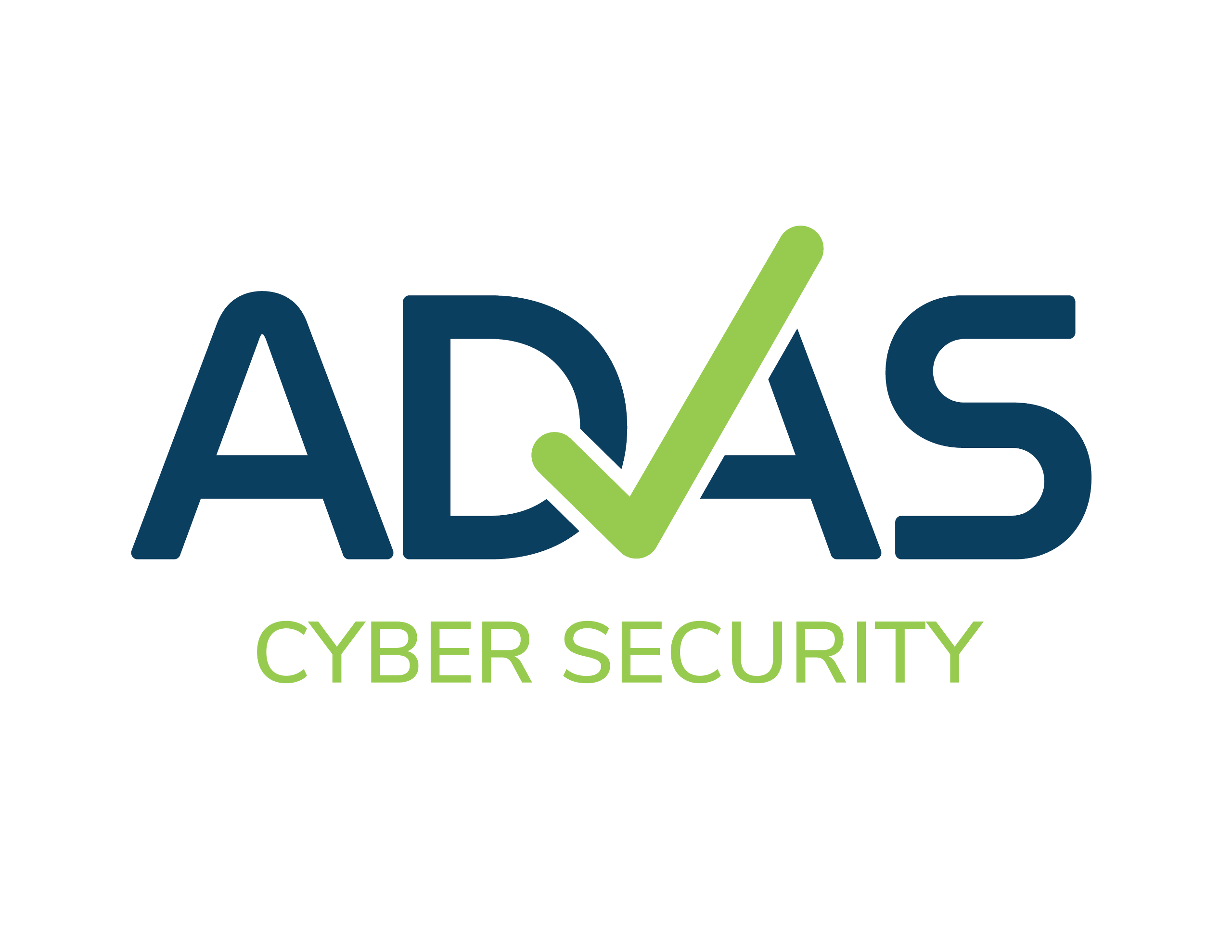Beware the Shadow Within: The Cyber Insider Threat
In my previous life as the Manager of the North West Regional Organised Crime Unit (ROCU) Cyber Crime Team, my team dealt with many serious and significant cyber attacks and cyber incidents. None were more malicious and damaging to business like the Insider criminal. The breach of trust and devasting impact this can have on work colleagues, management and teamwork cannot be under-stated.
With one particular incident an erstwhile successful Fintech business was brought to its knees by what was originally though as a DDOS (Distributed Denial of Service) attack, that transpired to be a Slowloris attack, pupariated by an insider employee. By remoting to his home computer using his phone and commencing the attack, this person took pleasure in watching mayhem unfold from the comfort of his office desk. The attack was from a single machine that circumvented security measures to take the company webserver server without using a lot of bandwidth. The business relied heavily upon customer interaction from its webserver submission forms and every Friday this came to a standstill, losing the company significant custom (worth over 1 million pounds) in the first month of this activity, and it took the IT team a while to realise something was wrong.
This was a relatively easy case to investigate and solve. The offender (an employee of the company) did not want any financial reward or blackmail, or any other motive than having a quiet Friday afternoon made it easier for him to ask his line manger for an early finish to start his weekend at 3pm rather than 5pm......
With today's hyper-connected world, organisations are battling an invisible enemy that lurks within their own digital walls - the cyber insider threat. By harnessing the power of advanced technology, we have created an interconnected web that has revolutionised industries and brought unprecedented opportunities. Unfortunately, this interconnectedness has also opened the floodgates for potential cyber threats from within.
Understanding the Cyber Insider Threat: Cyber insider threats can be broadly classified into two categories: malicious insiders and unintentional insiders. Malicious insiders are individuals within an organisation who, for various reasons, exploit their access privileges to harm the organisation or its stakeholders. On the other hand, unintentional insiders inadvertently expose sensitive information or fall victim to phishing attacks or social engineering techniques.
The Potential Consequences: The consequences of a cyber insider threat can be severe, jeopardising an organisation's reputation, financial stability, and sensitive data. These threats have the potential to cause significant financial losses, disrupt operations, and hamper the trust customers place in a brand. Additionally, insider threats can lead to legal implications, loss of intellectual property, and compromise of confidential data. In this article, I will delve into the dangers posed by cyber insider threats and explore effective measures to prevent them.
Preventing the Cyber Insider Threat
Implement Strict Access Control Measures

Establish robust access control protocols to limit privileged access and ensure that permissions are granted on a need-to-know basis. Regularly review access privileges and revoke them when employees change roles or leave the organisation. This is crucial to protecting your organisation's sensitive data and preventing unauthorised access. Here are some steps you can take to strengthen your access control measures:
- Implement the Principle of Least Privilege (PoLP): Adhere to the principle of least privilege, which means granting users the minimum access necessary to complete their tasks. Regularly review and update user permissions as employees change roles or responsibilities.
- Two-Factor Authentication (2FA): Implement two-factor authentication for all users, requiring an additional verification step (e.g., a one-time password sent via SMS or generated by an authentication app) along with the standard username and password login. This adds an extra layer of security and helps prevent unauthorised access.
- Strong Password Policies: Enforce strong password policies that require employees to create complex passwords that include a combination of uppercase and lowercase letters, numbers, and special characters. Regularly prompt users to change their passwords and educate them on good password hygiene.
- Regularly Review User Access: Conduct regular user access reviews to ensure that employees only have access to the systems and data necessary for their job roles. Remove access promptly when an employee changes roles or leaves the organisation.
- Role-Based Access Control (RBAC): Implement RBAC, which assigns access privileges based on predefined roles and responsibilities within the organisation. This ensures that users only have access to resources that are essential for their job functions and helps prevent unnecessary data exposure.
- Monitor and Log User Activities: Deploy tools and systems that monitor and log user activities, including login attempts, file access, and system changes. Regularly review these logs to identify any suspicious or unauthorised activities.
- Secure Remote Access: If your organisation allows remote access, implement secure remote access protocols such as virtual private networks (VPNs) or secure sockets layer (SSL) encryption. This helps protect data transmission from unauthorised interception.
- Regular Security Training and Awareness: Conduct regular security training and awareness programs for all employees, educating them about the importance of access control measures, potential threats, and best practices to follow. Foster a culture of security-consciousness throughout the organisation.
- Continuous Monitoring and Improvement: Implement a continuous monitoring system to identify any weaknesses or gaps in your access control measures. Regularly review and update your access control policies and procedures to stay up to date with evolving cyber threats.
By following these best practices, your organisation can implement strict access control measures to prevent unauthorised access, protect sensitive data, and enhance overall cybersecurity. Remember, strong access controls are essential for building a resilient defence against cyber threats.
Define Access Levels and Roles

Clearly define the different access levels and roles within your organisation based on job responsibilities and required access privileges. This helps ensure that employees have the necessary access rights to perform their duties while limiting access to sensitive information.
Defining strong access controls is crucial for establishing robust cybersecurity measures within an organisation. Here are some key steps to help define strong access controls:
Understand User Roles and Responsibilities: Begin by identifying different user roles within your organisation. Determine the specific responsibilities and access requirements associated with each role. This will help you establish appropriate access controls based on the principle of least privilege (PoLP), granting users the minimal access necessary to perform their tasks effectively.
Implement Role-Based Access Control (RBAC): RBAC is a widely adopted access control model that assigns permissions to user roles rather than individual users. By associating access rights with predefined roles, you can easily manage permissions for multiple users in a scalable manner. RBAC ensures that employees have access only to the resources required for their job functions, reducing the risk of unauthorised access or data exposure.
Use Multi-Factor Authentication (MFA): Implementing MFA adds an extra layer of security by requiring users to provide multiple factors of authentication before gaining access. This typically involves something the user knows (such as a password), something they have (like a mobile device or security token), or something they are (biometric data). MFA significantly enhances access control and protects against unauthorised access, even if passwords are compromised.
Enforce Strong Password Policies: Implement clear and strict password policies to ensure employees create strong and secure passwords. Require passwords to be a minimum length, include a mix of alphanumeric characters, and be changed regularly. Encourage the use of password management tools to prevent reuse of passwords and strengthen overall security.
Regularly Review and Audit Access Permissions: Perform periodic reviews of access permissions to ensure they remain aligned with users' roles and responsibilities. Regularly audit user accounts to identify any unauthorised or dormant accounts that could potentially grant access to sensitive information. Remove unnecessary access rights promptly when an employee changes roles or leaves the organisation.
Implement Network Segmentation: Segmenting your network helps limit lateral movement within your infrastructure, ensuring that users and systems have access only to the resources required for their specific functions. By creating separate network segments based on users, departments, or sensitivity levels of data, you can reduce the potential damage that could occur if an unauthorised user gains access.
Encrypt Sensitive Data: Implement data encryption techniques, both at rest and in transit, to protect sensitive information from unauthorised access. This includes encryption protocols for data storage devices, communication channels, and database systems. Encryption adds an extra layer of protection, rendering stolen or intercepted data unreadable without the decryption key.
Regularly Train Employees on Access Control Best Practices: Education and training play a fundamental role in establishing strong access controls. Develop and deliver training programs that educate employees on access control policies, procedures, and best practices. Cover topics such as password hygiene, recognising phishing attempts, and the importance of protecting access credentials.
Monitor and Analyse User Behaviour: Utilise security information and event management (SIEM) tools and behaviour analytics to monitor and analyse user behaviour patterns. Flag any abnormal or suspicious activities that may be indicative of unauthorised access attempts or insider threats. Real-time monitoring helps identify potential security breaches and allows for swift action to mitigate risks.
Continuously Assess and Improve: Access controls should be regularly reviewed and updated to adapt to evolving cyber threats. Stay informed about the latest security best practices and vulnerabilities in order to refine your access control measures accordingly. Conduct ongoing risk assessments to identify potential weaknesses and proactively address them.
By following these steps, you can define strong access controls that significantly enhance your organisation's cybersecurity posture, reduce the risk of unauthorised access, and protect sensitive data from potential threats. Remember, strong access controls are an essential component of a comprehensive cybersecurity strategy.
Conduct Regular Security Awareness Training

Educate employees about the potential risks associated with cyber threats. Train them to recognise suspicious activities, how to report them, and how to follow best practices for maintaining cybersecurity hygiene.
In the UK, you can find free cybersecurity training through various sources. Here are some options to consider:
National Cyber Security Centre (NCSC): The NCSC offers a range of free cybersecurity training resources, including online courses and downloadable guides. They cover topics such as basic cybersecurity, securing digital devices, and protecting personal information.
Open University: The Open University offers free access to cybersecurity-related courses through their OpenLearn platform. These courses cover topics like digital forensics, network security, and encryption.
National Crime Agency (NCA): The NCA provides free cybersecurity training resources for individuals and businesses through their Cyber Choices and Cyber Aware initiatives. These resources focus on raising awareness about cybercrime and providing practical advice for staying safe online.
Tech Partnership Degrees: Tech Partnership Degrees provides free online training modules through their Cyber Security Learning Path. This resource is specifically designed for those interested in pursuing a career in cybersecurity and covers topics such as threat analysis and system security.
FutureLearn: FutureLearn is an online platform that offers a wide range of free cybersecurity courses from universities and institutions worldwide. These courses cover various topics, including cybersecurity fundamentals, digital privacy, and malware analysis.
OpenLearn Wales: OpenLearn Wales, operated by The Open University, offers free cybersecurity courses specifically for learners based in Wales. These courses provide an understanding of cybersecurity risks and offer practical advice for individuals and businesses.
Cyber Security Challenge UK: Cyber Security Challenge UK hosts online competitions and events that provide opportunities to test and develop cybersecurity skills. While not traditional training courses, participation can help enhance practical skills and knowledge.
Remember to review the course content to ensure it aligns with your specific interests and objectives within the field of cybersecurity. Additionally, stay updated with the latest cybersecurity news and events in the UK, as organisations and institutions often offer free training resources and events throughout the year.
Foster a Culture of Trust
Encourage a work environment that fosters open communication and transparency. Promote ethical behaviour and provide employees with channels to voice concerns, ensuring they don't resort to malicious acts.
Regularly Conduct Risk Assessments

Conduct regular risk assessments to identify vulnerabilities and implement proactive measures to address them. This includes conducting penetration testing, vulnerability assessments, and implementing robust security controls.
Conducting regular cybersecurity risk assessments is essential for identifying vulnerabilities and potential threats within your organisation's systems and processes. Here is a step-by-step guide on how to conduct effective cyber security risk assessments:
Identify Assets: Begin by identifying and documenting all the critical assets within your organisation. This includes hardware, software, data repositories, network infrastructure, and any other technology or information crucial to your operations.
Determine Potential Threats: Identify and assess potential internal and external threats that could compromise the confidentiality, integrity, or availability of your assets. This may include malicious actors, natural disasters, technological failures, or human errors.
Evaluate Vulnerabilities: Identify vulnerabilities or weaknesses within your systems that could be exploited by the identified threats. This could include outdated software, misconfigurations, weak passwords, or lack of security controls.
Assess the Impact: Determine the potential impact of a successful attack or data breach on your business. This includes financial loss, reputational damage, legal implications, operational disruptions, and any other relevant consequences.
Assign Likelihood and Impact Ratings: Assign likelihood and impact ratings to each identified threat and vulnerability. These ratings can be subjective, based on expert knowledge or historical data, or more data-driven if supported by statistical analysis.
Calculate Risk Level: Combine the likelihood and impact ratings to calculate the risk level for each identified threat and vulnerability. This helps prioritise which risks require immediate attention and mitigation.
Identify and Prioritise Countermeasures: Based on the calculated risk levels, determine appropriate countermeasures to mitigate or eliminate the identified risks. These countermeasures may include technical controls (e.g., firewalls, intrusion detection systems), policies and procedures, employee training programs, or implementing security best practices.
Implement and Test Controls: Once you have identified the necessary countermeasures, implement them within your organisation's systems and processes. Regularly test and evaluate the effectiveness of these controls to ensure they are functioning as intended.
Document and Review: Document the entire risk assessment process, including all identified threats, vulnerabilities, risk levels, and implemented controls. This documentation serves as a reference for future assessments and provides a clear picture of the current state of your organisation's cybersecurity posture.
Conduct Regular Reviews: Perform regular reviews of your risk assessment process to ensure it remains up to date. Cyber threats and vulnerabilities are constantly evolving, so it's crucial to reassess periodically and make necessary adjustments to your countermeasures.
Remember, cybersecurity risk assessments should be an ongoing process, rather than a one-time event. By regularly assessing and reassessing your organisation's risks, you can proactively identify and address potential vulnerabilities, mitigating the risk of cyber attacks and safeguarding your business operations.
Enforce Strong Password and Privilege Management

Enforce the use of strong passwords and regular password resets. Implement privileged access management tools to restrict access to critical systems, reducing the risk of unauthorised access.
Here are some industry best practices for password security.
Length and Complexity: Encourage users to create passwords that are at least eight characters long and include a combination of uppercase and lowercase letters, numbers, and special characters.
Avoid Common or Predictable Passwords: Discourage the use of common or easily guessable passwords such as "123456" or "password." Implement controls to prevent users from selecting weak or previously compromised passwords.
Regular Password Changes: Encourage users to change their passwords periodically, typically every three to six months. This practice helps prevent the continued use of compromised passwords.
Password Encryption: Ensure that passwords are stored securely using encryption techniques. This helps protect passwords from unauthorised access even in the event of a data breach.
Multi-Factor Authentication (MFA): Implement MFA to complement password security. This adds an extra layer of protection by requiring users to provide additional verification factors to access systems or applications.
It's important to note that the specific password requirements may vary based on an organisation's policies, regulations, and risk appetite.
Monitor Network and System Activity

Employ robust network and system monitoring tools to identify any anomalies or suspicious behaviour. Identifying unusual activity at an early stage can help prevent or minimise the damage caused by an insider threat.
The cyber insider threat poses a significant risk to every organisation's security posture. By understanding the potential dangers and taking proactive steps to prevent insider threats, organisations can protect their sensitive data, maintain business continuity, and safeguard their reputation. Implementing a comprehensive cybersecurity framework, fostering a culture of awareness, and enforcing strong access controls are crucial steps in mitigating the risks associated with this ever-evolving threat landscape. Stay vigilant, stay prepared, and keep cyber insiders at bay.
Develop a Strong Insider Threat Program

Establish a dedicated insider threat program to monitor and detect any unusual behaviour or data exfiltration attempts. This program should include the implementation of technical controls such as intrusion detection systems, behaviour analytics, and security information and event management (SIEM) tools.
Cyber Essentials Plus certification adds vulnerability scanning to the mix, to really address your security posture.
Cyber Assurance (Level 1 and 2) certification provides assurance that an organisation has put in practice a range of important cyber security, privacy and data protection measures. This offers smaller companies within a supply chain a 'right sized' approach to show their level of information security for a realistic cost. The Standard aligns directly on all topics with the UK Government's 10 steps to Cyber Security in addition to Data Privacy controls, and is increasingly accepted by procurement teams as an alternative to ISO/IEC 27001:2022 for smaller organisations.
If you need help with any of the above or have any certification requirements, support or simply a chat about security I am happy to help. Touch base with me here and please give us a thumbs up, like & share if you find this article helpful.

